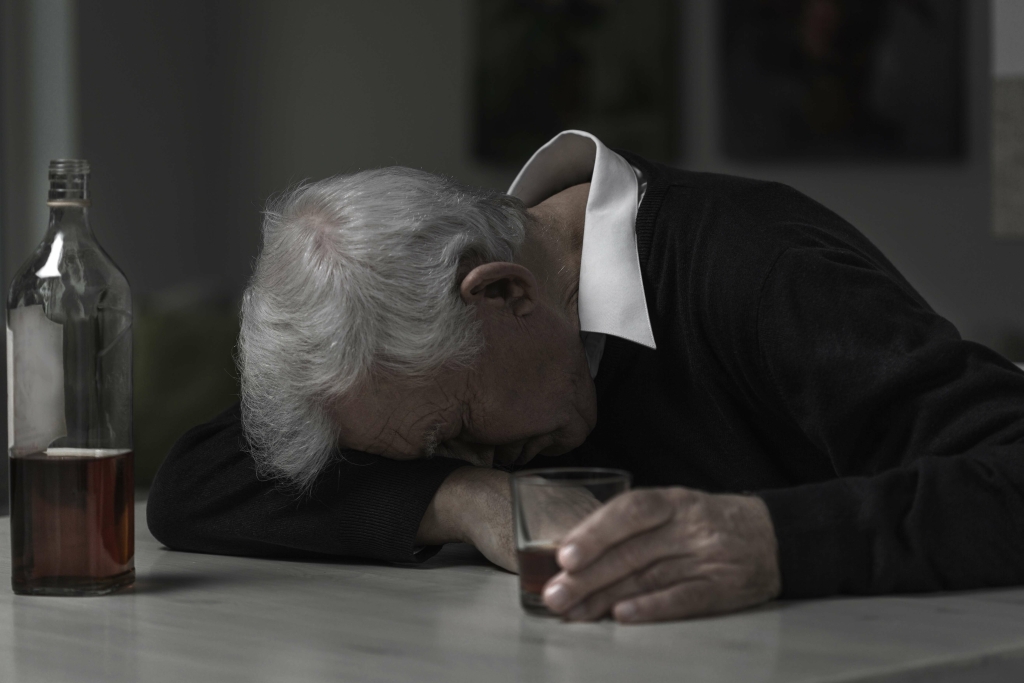Content
- Get help for alcoholism today.
- Reducing the harm from alcohol by regulating cross-border alcohol marketing, advertising and promotion:…
- Risk factors
- Addictions We Treat
- How can I prevent alcohol use disorder?
- Does Drinking a Beer After Working Out Have Any Benefits?
- Potential downsides, risks, and side effects
The content on AlcoholRehab.com is brought to you by American Addiction Centers , a nationwide network of leading substance abuse and behavioral treatment facilities. Over time, heavy drinking can cause involuntary rapid eye movement as well as weakness and paralysis of your eye muscles due to a deficiency of vitamin B-1 . A thiamin deficiency can result in other brain changes, such as irreversible dementia, if not promptly treated. People with a history of emotional trauma or other trauma are at increased risk of alcohol use disorder. The risk of alcohol use disorder is higher for people who have a parent or other close relative who has problems with alcohol.
Your safe alcohol limit is based on your blood alcohol concentration and is the amount of alcohol you can drink in a single drinking session. You will need professional assistance to determine what this safe limit is for you. Heavy drinking can cause increased fat in the liver and inflammation of the liver . Over time, heavy drinking can cause irreversible destruction and scarring of liver tissue . Too much alcohol affects your speech, muscle coordination and vital centers of your brain. A heavy drinking binge may even cause a life-threatening coma or death. This is of particular concern when you’re taking certain medications that also depress the brain’s function.
Get help for alcoholism today.
The costs to society in terms of lost productivity, health care costs, traffic accidents, and personal tragedies are staggering. Numerous studies and reports have been issued on the workplace costs of alcoholism and alcohol abuse, and they report costs that range from $33 billion to $68 billion per year. Alcohol is a major factor in injuries, both at home, at work, and on the road. Please see the Appendix – The Disease of Alcoholism for a further discussion of alcoholism.
- For more information about alcohol and cancer, please visit the National Cancer Institute’s webpage “Alcohol and Cancer Risk” .
- “That’s why you might get that warm, fuzzy feeling when you’re drinking.”
- Other times, it gradually creeps up on you as your tolerance to alcohol increases.
- Having repeated problems with work, school, relationships or the law because of drinking.
Symptoms can be severe enough to impair your ability to function at work or in social situations. Diagnosis is based on a conversation with your healthcare provider. The Risks of Drinking After Work diagnosis is made when drinking interferes with your life or affects your health. Alcohol use disorder is a medical condition involving frequent or heavy alcohol use.
Reducing the harm from alcohol by regulating cross-border alcohol marketing, advertising and promotion:…
If the employee does not choose to go into treatment, the next step will be to take any disciplinary or corrective actions that are necessary. In any case, the appropriate course of action is to continue to hold the employee accountable for his or her performance and/or conduct, regardless of whether or not the employee has admitted an alcohol problem. “Employers may want to consider allowing employees to have a little more autonomy at work, like they have some kind of choice on the job,” Grandey said.

Cherry-picking employees to fraternize with could undoubtedly create tension and an undesirable workplace environment. To mitigate this issue, management can insist on group lunches or another outing that allows employees to bond. Treatment providers are available 24/7 to answer your questions about rehab, whether it’s for you or a loved one. Submit your number and receive a free call today from a treatment provider. If you or a loved one is ready to overcome an alcohol addiction, reach out today.
Risk factors
When you exercise, your body’s stored form of carbs — called glycogen — may become depleted. Beer is typically brewed from water, grains, hops, and yeast.
Arrange for a ride home with a sober driver, or pre-book a cab or rideshare service. If that is too costly, plan your journey home via public transportation so you know when to leave while the buses or trains are still running. Leave your car at home so you will not be tempted to use it. Drink only the amount you wrote down, and at the speed specified.
Addictions We Treat
Absenteeism is estimated to be 4 to 8 times greater among alcoholics and alcohol abusers. Other family members of alcoholics also have greater rates of absenteeism. Accidents and on-the-job injuries are far more prevalent among alcoholics and alcohol abusers.
Is Wet brain a disability?
Left untreated, wet brain will continue to worsen and can be life-threatening. Vision difficulties and issues with balance can lead to dangerous falls and head injuries. Permanent memory loss and cognitive deficits can lead to permanent disability and shortened lifespan.
Listening to others with the same challenges can serve as a tremendous source of comfort and support. If you find yourself rationalizing your drinking habits, lying about them, or refusing to discuss the subject, take a moment to consider why you’re so defensive. If you truly believe that you don’t have a problem, you shouldn’t have a reason to cover up your drinking or make excuses. For example, you may blame an ‘unfair boss’ for trouble at work or a ‘nagging wife’ for your marital issues, rather than think about how your drinking is contributing to the problem. While work, relationship, and financial stresses happen to everyone, an overall pattern of deterioration and blaming others may be a sign of trouble. For example, you recognize that your alcohol use is damaging your marriage, making your depression worse, or causing health problems, but you continue to drink anyway. You’re spending less time on activities that used to be important to you because of your alcohol use.
How can I prevent alcohol use disorder?
While cirrhosis scars from excessive drinking are irreversible, quitting alcohol and leading a healthier lifestyle can help your liver heal from alcohol-related liver disease. If you think you or a loved one needs treatment for alcohol addiction, don’t wait to get help as the consequences can be dire. Reachout to one of our staffat The Recovery Village today.Your call is free and confidential, and there is no obligation to commit to https://ecosoberhouse.com/ a program to learn more about alcohol detox and rehab. Drinking to relieve or avoid withdrawal symptoms is a sign of alcoholism and a huge red flag. When you drink heavily, your body gets used to the alcohol and experiences withdrawal symptoms if it’s taken away. Substance abuse experts make a distinction between alcohol abuse and alcoholism . Unlike alcoholics, alcohol abusers have some ability to set limits on their drinking.

People with alcohol use disorder can’t stop drinking, even when it causes problems, emotional distress or physical harm to themselves or others. It involves heavy or frequent alcohol drinking even when it causes problems, emotional distress or physical harm. A combination of medications, behavioral therapy and support can help you or a loved one recover. Anyone with an alcohol dependency disorder who desires to stop drinking should seek professional medical care or a treatment center specializing in safe alcohol detoxification. With a blood alcohol content between 0.01 – 0.05, this is the first stage of intoxication. You may not look like you have been drinking, but your reaction time, behavior and judgment may be slightly altered. Depending on weight, most men and women enter this stage after one drink.
Does Drinking a Beer After Working Out Have Any Benefits?
In a large-scale study, links between alcohol use disorder and dementia are fleshed out. Signs and symptoms of withdrawal generally occur between 4 and 72 hours after the last drink or after reducing intake. Since the liver can only process the equivalent of one drink at a time, the body may remain saturated with the alcohol that has not yet left the body. According to the National Survey on Drug Use and Health , 15.1 million people aged 18 years and over in the U.S. had alcohol use disorder , or 6.2 percent of this age group. Alcohol is a legal recreational substance for adults and one of the most commonly used drugs in the United States. People consume alcohol to socialize, to relax, and to celebrate. A BAC over 0.45 may cause death due to alcohol poisoning or failure of the brain to control the body’s vital functions.

Recent Comments